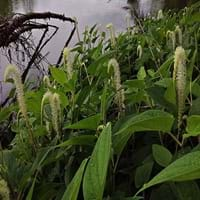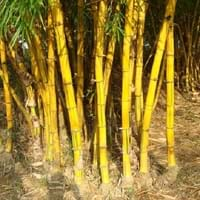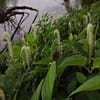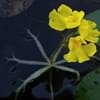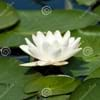Life Span
Perennial
Perennial
Origin
Northeastern United States, Mid-Atlantic United States, Southeastern United States, North-Central United States, Central United States, South-Central United States, Canada
China, Japan
Types
Not Available
Not Available
Habitat
Moist Soils, Terrestrial, Upland, Wet lands
Tropical regions
USDA Hardiness Zone
3-11
7-11
AHS Heat Zone
11-1
12 - 3
Sunset Zone
21,22
H1, 4, 5, 6, 7, 8, 9, 10, 11, 12, 13, 14, 15, 16, 17, 18, 20, 21, 22, 23, 24
Habit
Thicket/Colonizing
Thicket/Colonizing
Flower Color Modifier
Not Available
Bicolor
Fruit Color
Brownish Red
Not Available
Leaf Color in Spring
Green, Dark Green
Green, Yellow green
Leaf Color in Summer
Green, Dark Green
Light Green
Leaf Color in Fall
Green, Dark Green
Yellow green
Leaf Color in Winter
Not Available
Yellow
Leaf Shape
Heart-shaped
Long Linear
Plant Season
Spring, Summer, Fall
Spring, Summer, Fall, Winter
Sunlight
Full Sun, Partial Sun, Partial shade
Full Sun, Partial Sun
Growth Rate
Medium
Very Fast
Type of Soil
Loam
Clay, Loam, Sand
The pH of Soil
Acidic, Neutral
Acidic, Neutral, Alkaline
Soil Drainage
Average
Average
Bloom Time
Summer
Not Available
Tolerances
Wet Site
Pollution, Soil Compaction
Where to Plant?
Container, Ground, Pot
Container, Ground
How to Plant?
From Rhizomes, Root Division
Grafting, Seedlings, Stem Planting, Transplanting
Plant Maintenance
Medium
Medium
Watering Requirements
Needs Very high moisture
Needs watering once a week, Use Mulches to help prevent water loss during hot and windy weather, Water Deeply
In Summer
Lots of watering
Lots of watering
In Spring
Moderate
Moderate
In Winter
Average Water
Average Water
Soil pH
Acidic, Neutral
Acidic, Neutral, Alkaline
Soil Type
Loam
Clay, Loam, Sand
Soil Drainage Capacity
Average
Average
Sun Exposure
Full Sun, Partial Sun, Partial shade
Full Sun, Partial Sun
Pruning
Remove damaged leaves, Remove dead branches, Remove dead leaves
Do not prune during shooting season, Prune in late summer or fall, Remove damaged leaves
Fertilizers
All-Purpose Liquid Fertilizer
All-Purpose Liquid Fertilizer
Pests and Diseases
bees
Black sooty mold, Mealybugs, Mosaic viruses, Powdery mildew, pythogens, Stem rot
Plant Tolerance
Drought
Drought
Flower Petal Number
Single
Single
Foliage Texture
Medium
Medium
Foliage Sheen
Matte
Matte
Attracts
Bees, Flies, Turtles
Bees, Bugs
Allergy
allergic reaction, Pollen
allergic reaction, Hay fever, wheezing
Aesthetic Uses
Bog Garden, Showy Purposes, Water gardening, Wild gardens
Showy Purposes
Beauty Benefits
Not Available
Not Available
Environmental Uses
Air purification
Air purification
Medicinal Uses
Insect Bites, Treating fever
Clears heat, Cold, Treating fever, Urinary tract problems
Part of Plant Used
Flowers, Leaves, Root
Leaves
Other Uses
Grown in botanical gardens as a specimen, Used as Ornamental plant
Application in Handicrafts, Showy Purposes, Used As Food, Used in Furniture, Used in paper industry
Used As Indoor Plant
Sometimes
No
Used As Outdoor Plant
Yes
Yes
Garden Design
Container, Water Gardens, Wildflower
Container, Feature Plant, Screening / Wind Break, Tropical
Botanical Name
SAURURUS cernuus
PHYLLOSTACHYS aurea
Common Name
Lizard's Tail
Golden Bamboo, Running Bamboo
In Hindi
Saururus cernuus
Bānsa
In German
Saururus cernuus
Bambus
In French
Saururus cernuus
Bambou
In Spanish
cernuus Saururus
Bambú
In Greek
Saururus cernuus
μπαμπού
In Portuguese
Saururus cernuus
bambu
In Polish
Saururus cernuus
Bambus
In Latin
Saururi cernuus
Bamboo
Phylum
Tracheophyta
Magnoliophyta
Class
Magnoliopsida
Liliopsida
Family
Saururaceae
Poaceae
Clade
Angiosperms, Magnoliids
Not Available
Tribe
Not Available
Bambuseae
Subfamily
Not Available
Not Available
Number of Species
Not Available
Not Available
Importance of Saururus cernuus and Golden Bamboo
Want to have the most appropriate plant for your garden? You might want to know the importance of Saururus cernuus and Golden Bamboo. Basically, these two plants vary in many aspects. Compare Saururus cernuus and Golden Bamboo as they differ in many characteristics such as their life, care, benefits, facts, etc. Every gardener must at least have the slightest clue about the plants he wants to plant in his garden. Compare their benefits, which differ in many ways like facts and uses. The medicinal use of Saururus cernuus is Insect Bites and Treating fever whereas of Golden Bamboo is Clears heat, Cold, Treating fever and Urinary tract problems. Saururus cernuus has beauty benefits as follows: Not Available while Golden Bamboo has beauty benefits as follows: Not Available.
Compare Facts of Saururus cernuus vs Golden Bamboo
How to choose the best garden plant for your garden depending upon its facts? Here garden plant comparison will help you to solve this query. Compare the facts of Saururus cernuus vs Golden Bamboo and know which one to choose. As garden plants have benefits and other uses, allergy is also a major drawback of plants for some people. Allergic reactions of Saururus cernuus are allergic reaction and Pollen whereas of Golden Bamboo have allergic reaction, Hay fever and wheezing respectively. Having a fruit bearing plant in your garden can be a plus point of your garden. Saururus cernuus has no showy fruits and Golden Bamboo has no showy fruits. Also Saururus cernuus is not flowering and Golden Bamboo is not flowering . You can compare Saururus cernuus and Golden Bamboo facts and facts of other plants too.
